by Eva Szwarc // June 25, 2024
This article is part of our feature topic Habitat.
Jumana Manna is a Palestinian visual artist and filmmaker based between Jerusalem and Berlin. Her recent work includes the feature-length films ‘Wild Relatives’ (2018) and ‘Foragers’ (2022). The former highlights the paradoxes of preservation, following the journey of seeds between two banks—Svalbard Global Seed Vault in Norway and the ICARDA genebank, which was forced to relocate from Aleppo to Lebanon in 2012, and embarked on planting its collection’s back-ups retrieved from Svalbard. ‘Foragers’ looks at the tension between the act of foraging and the absurdity of Israeli state control that prohibits it. The act of foraging continues a relationship with the land that is abjectly threatened by erasure. Manna’s work explores the different articulations of power, locating them in their historical and political contexts, both in human and non-human encounters. Meanwhile, a touch of humour runs throughout. We spoke with Manna about herbariums, habitats beyond state and corporate interests, shifting between art forms and the place of creative process as the war on Gaza rages on.
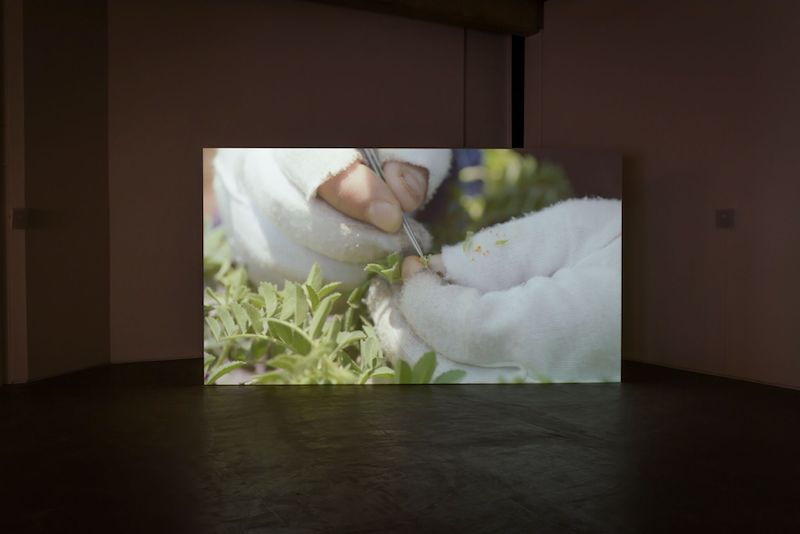
Jumana Manna: ‘Wild Relatives,’ 2018, installation view, Douglas Hyde Gallery, Dublin // Photo by Louis Haugh, courtesy Douglas Hyde Gallery
Eva Szwarc: Your two most recent works, ‘Wild Relatives’ (2018) and ‘Foragers’ (2022), are embedded in our relationship to the land and its native plants. From what place did the desire to explore this relationship first spring?
Jumana Manna: I came to work on plants through pressed plants stuck on herbarium sheets, which I encountered in various Levantine archives. I was struck by how something so beautiful and delicate could carry with it histories of violence. Herbariums preserve the plant morphology and colors dating back to the 17th century, as well as the ideologically motivated attempts to map, study and categorize the flora and the land. It’s the combined love and study of botany and the natural world feeding the extractivist economies of colonial expansion that caught my attention.
From these early modern taxonomic practices, I moved into present-day human-plant-land relations including seed banking, farming and foraging. That’s the chronology within my practice, but of course the struggle around the land is the heart of the struggle against settler-colonialism and occupation. Growing up as a Palestinian in occupied Jerusalem, I intimately know the paradoxes of this form of rule; one that tries very hard to naturalize the settler through the replacement and elimination of the native. While what defines the native, or indigeneity, is a continued ancestral relation to the land and all that grows on it.
I was driving with my mother the other day. We saw an olive grove behind a junction that was otherwise surrounded by Israeli settlements and I wondered about the name of the Palestinian village that once stood there. My mom said something along the lines of: “I feel sad when I see these trees on their own. They once had friends and family.” This casual expression of grief and kinship to the trees runs deep throughout our communities.
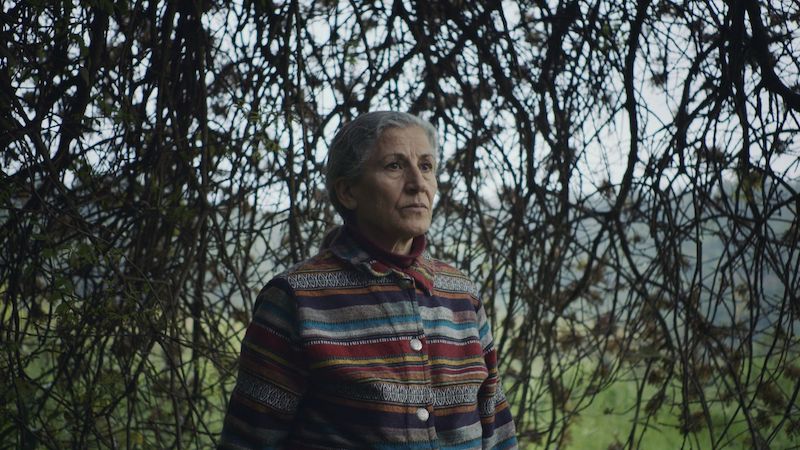
Jumana Manna: ‘Foragers,’ 2022, 2K video with sound, 63 minutes 34 seconds // © Jumana Manna, courtesy the artist and Hollybush Gardens, London
ES: If we take habitat as the definitions of “preferred surroundings” or “natural home,” habitat in your work seems nestled in the intimate spaces we create with one another. As in ‘Foragers,’ set in Palestine, intimate habitats are necessitated by the violence of the Israeli state. They are spaces for continued knowledge sharing and become a quiet and powerful act of resistance. How do you see habitat within your work?
JM: These intimate spaces that you refer to in ‘Foragers,’ for example, precede and exceed the state; which is precisely the refusal of that state and its logics. The intimacies and habitats I’m interested in are not just interpersonal but human-plant, or human-land. How the in-habitation of the land has been developed over millennia through those co-dependencies and relations. The only in-common future on this planet is through the recognition of that entanglement, and a care towards all that is living.
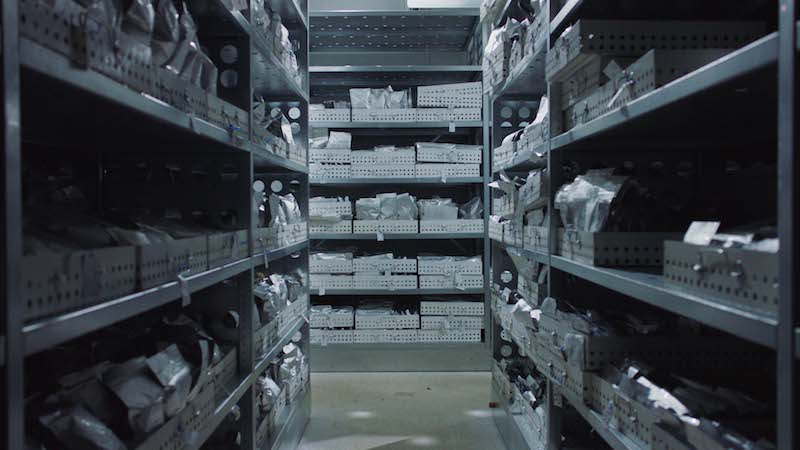
Jumana Manna: ‘Wild Relatives,’ 2018, 2K video with sound, duration 63 minutes 55 seconds // © Jumana Manna, courtesy the artist and Hollybush Gardens, London
ES: When watching ‘Wild Relatives,’ I remember finding the clinical and cold approach of the Global Seed Vault challenging. I wonder how the process of making this film felt at the time, whether you anticipated or were surprised by their position?
JM: I found dealing with the Global Seed Vault and it’s network of institutions challenging too. It was hard to find life and humor within these spaces, which are usually driving forces within my work. I had mixed feelings about the place having spoken to and read many critical voices that emphasized the potential dangers and paradoxes of the so-called doomsday vault: the dodgy funding structures and ties to philanthropic giants like the Bill and Melinda Gates Foundation and other multinational corporations, storing and “protecting” the world’s crop seeds that come primarily from the Global South, in the melting arctic of the North, the prioritizing of techno-scientific solutions often at the expense of empowering farmers and social justice. By the time I arrived there to shoot, I knew what kind of place it was and what kind of image I was searching for.
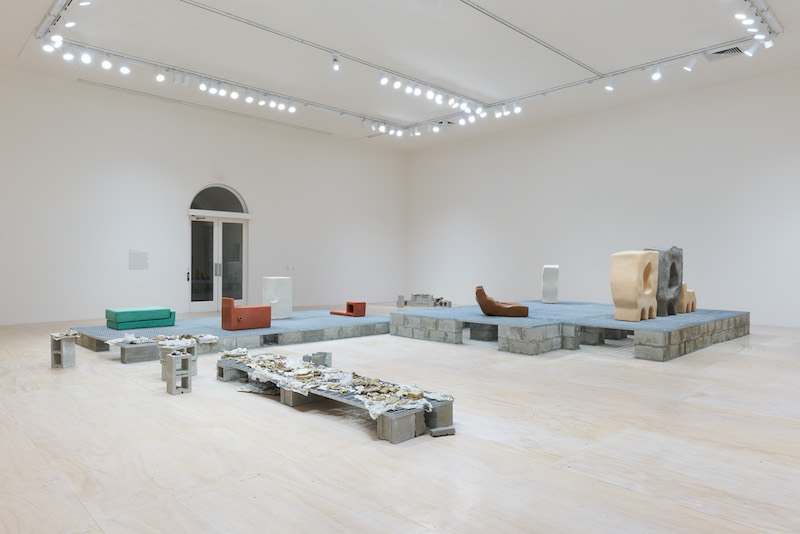
Jumana Manna: ‘Break, Take, Erase, Tally,’ 2022-23, installation view at MoMA PS1 // Courtesy MoMA PS1, photo by Curtis Wallen
ES: Alongside filmmaking, you create sculptures. Does this still take up a large part of your practice as an artist, and what draws you back and forth between each medium?
JM: There has been little headspace for creative processes at all lately. Israel’s genocidal war on Gaza is so shocking that a whole new vocabulary has been invented to account for the scale of destruction: scholasticide, domicide, econocide, alongside the ones we were unfortunately already familiar with. Language and meaning in all their forms are in crisis. It’s hard to really say where things are going, but so far I suppose I still am committed to both mediums.
Over the past decade, sculpture has been closer to poetry for me, incomplete sentences and abstraction, where abstraction is a tool for both condensation and multitude. Sculpture is spatial and bodily while managing to side step representation in the more traditional or identitarian sense of the word. Film is where I continued to explore “politics” more directly. My films are more thesis and narrative driven, they involve more writing, collaboration, funds and waiting time. I love entering people’s lives and working with them, even though it’s a headache at times. But once they’re done, films are relatively easy to circulate and share. The power of assembly, being in a cinema with small or big audiences, the collective energy of traveling in time and place through the screen is a magical feeling.
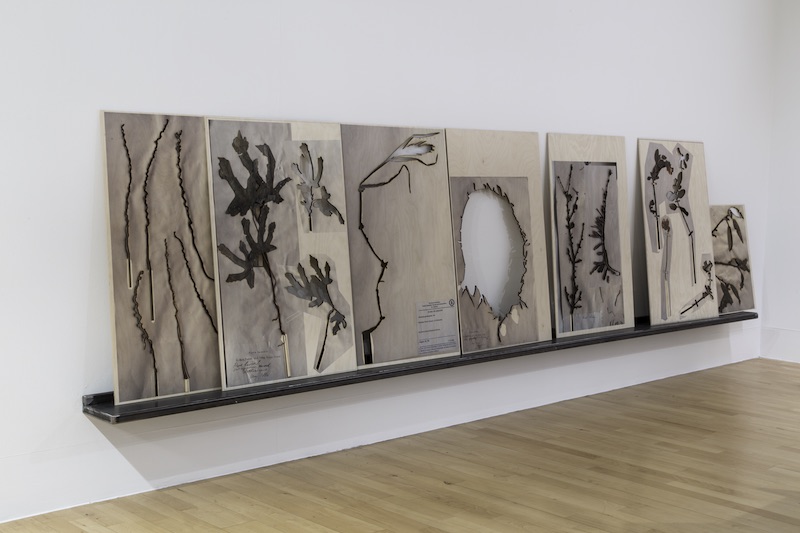
Jumana Manna: ‘Post Herbarium,’ 2016, installation view Liverpool Biennale 2016 // Photo by Richard Ivey
ES: Art is currently being subjected to increased censorship across the board; Berlin, specifically, has seen the cancellation of Palestinian-related cultural events, alongside an attempt to pass the controversial anti-discrimination clause. I think it has underlined the importance of art and cultural freedom. How do you see the role of art currently?
JM: I would make a distinction between the role of art as such and the role of cultural spaces. Art can take on many roles and approaches depending on the artist’s work, their positionality and interests. But the role of cultural spaces demands fostering and protecting dissent. This is what freedom of expression and freedom of art are about; the right to express ourselves differently, the right to critique state power, especially with regards to oppressed minorities. When this space is closed, we get conformity and complacency, the results of which we know very well in this country. Rather than learning how to be in-common through difference and dissent, we’ve witnessed a strengthening of the hegemonic state position, since the passing of the anti-BDS resolution in 2019, to the more hysterical avalanche of cancellations post-October 7th. The majority of the cultural establishment and its spaces have proven to be extensions of the staatsräson, that brazenly defends Zionism, criminalizes the critique of the state of Israel and either disavows or attempts to erase the legitimacy of Palestinian struggle and affect.
Today, the most important and interesting conversations are happening underground, in non-funded spaces, in solidarity events, student-run initiatives, semi-private venues and on the street. Out of a toxic mix of fear and opportunism, arrogance and ignorance, the German cultural establishment has rendered itself provincial and irrelevant.
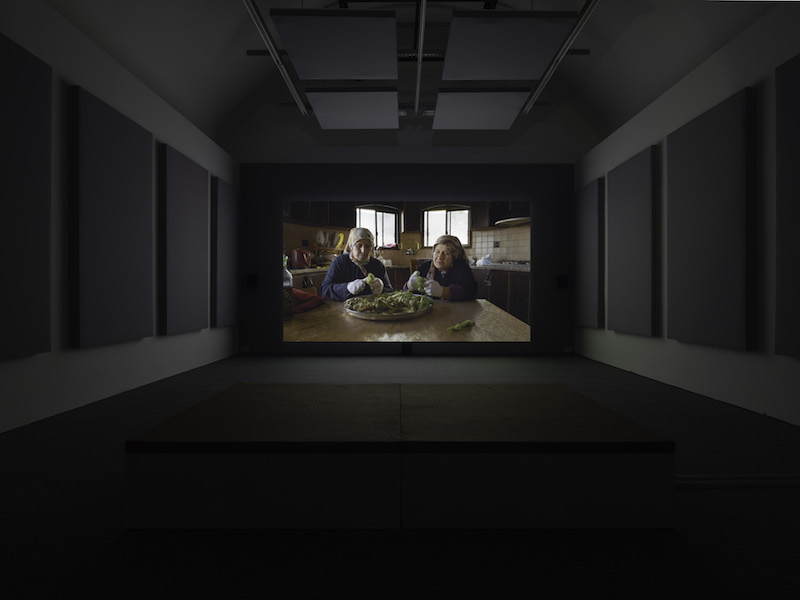
Jumana Manna: ‘Foragers,’ installation view, Hollybush Gardens, London // Photo by Eva Herzog
ES: Can you speak a little about what you’re currently working on?
JM: I’m trying to write a new film that is broadly looking at what it means to remain in Jerusalem as a Palestinian: the particular sense of entrapment amongst a technologically powerful enemy, and the insistence on joy within what has been called the city of death.
In a different city, and what sometimes feels like a parallel world, I’m working on a large public sculpture in Oslo, commissioned by KORO—Public Art Norway, for the new Government Quarter in the center of town. This 800m2 plaza is a collage of repurposed stones that were once part of public infrastructure across Norway: stones of various colors, shapes, ages and sizes that were units in pavements, bridges, factories, schools, prisons, water drainage, roads, tunnels, ports, roundabouts, public sculptures, dams and walls. These infrastructural fragments have been gathered on a donation-basis from over 100 localities.
The scale of the project is so big, and in the first year we lived with it only through ideas and sketches. We’re currently installing the work onsite, and to stand on it and feel the energy of the composition in life scale has been really incredible. There’s an strange feeling, of excitement, privilege and melancholy, to be working on a permanent piece for Oslo at a time when Palestinian cultural heritage—our museums, archaeology, universities, homes, public spaces—is being erased in Gaza.
I’ve been thinking about a number of themes that I believe the work opens up as a prism: radical democracy, the inclusions and exclusions of nation-state governance, immigration, asylum, the necessity of remaining infinitely open to uninvited elements and non-extractivist approaches to construction. Questions that suddenly feel like a luxury to dwell in, as Palestinians are fighting against being reduced to bare life. I’ve been blessed to have a wonderful team and supportive institution that has given me continuity while so much else has fallen apart or been put under immense duress.
Exhibition Info
Kunsthall Stavanger
Jumana Manna: ‘Break, Take, Erase, Tally’
Exhibition: Mar. 7-Aug. 25, 2024
kunsthallstavanger.no
Madlaveien 33, 4009 Stavanger, Norway, click here for map
Sismógrafo
Jumana Manna: ‘Screenings and Studies’
Exhibition: June 1-July 20, 2024
sismografo.org
Rua do Heroísmo 318, 4300-096 Porto, Portugal, click here for map
Taxispalais Kunsthalle Tirol
Group Show: ‘The Daughters’ Trilogy. Chapter I: Matriarchy’
Exhibition: May 17-Aug. 18, 2024
taxispalais.art
Maria-Theresien-Straße 45, 6020 Innsbruck, Austria, click here for map



















